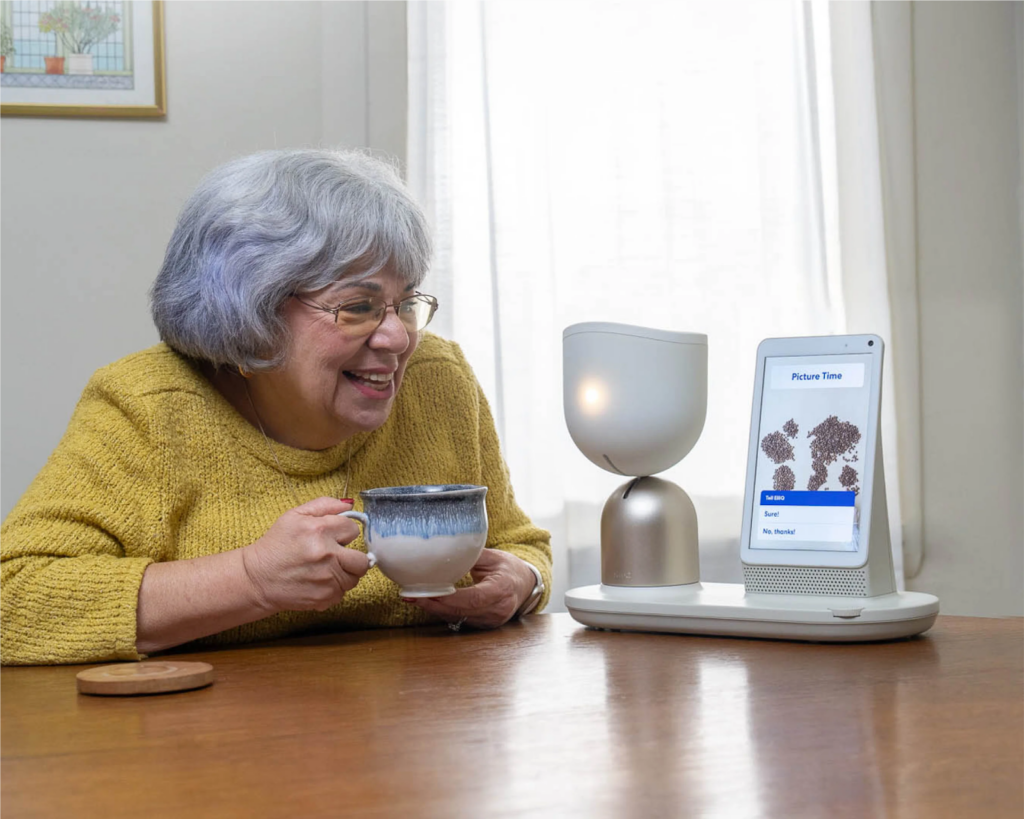For many, the image of healthcare often conjures up sterile hospital environments and hurried clinic visits. But what if the future of well-being resided more comfortably within the familiar walls of our own homes? The reality is that the healthcare landscape is rapidly evolving, driven by groundbreaking technological advancements poised to fundamentally transform how we receive care, particularly within the comfort and convenience of our living spaces.
Discover how future tech is making healthcare more accessible, convenient, and empowering, right where you need it most. Read more below.
The Growth of Home Healthcare

The home healthcare sector is growing rapidly, driven by changes in demographics and preferences for more personalized care. By 2030, the U.S. home healthcare industry is expected to reach $253.4 billion in revenue. This growth is mainly due to the increasing number of elderly individuals who need care and the growing preference for care at home rather than in medical facilities.
The COVID-19 pandemic accelerated the shift to home healthcare as people sought safer alternatives to hospital-based care. In 2022, 89.2% of patients reported being satisfied with home healthcare services, showing how popular and effective this model has become. The number of home healthcare agencies also increased significantly, reaching about 33,200.
What’s Driving the Growth of Home Healthcare?
Several factors are fueling the growth of home healthcare. The population is aging, and there is growing recognition that many medical procedures traditionally performed in hospitals can be done at home.
Studies have shown that home healthcare can help reduce hospital readmissions and shorten the length of hospital stays for many patients. Home healthcare makes it easier for people with mobility challenges or chronic conditions to receive the care they need without leaving their homes.

The Rise of Telehealth in Home Care
Telehealth has come a long way, transforming from simple video calls to comprehensive virtual care platforms. It became widely adopted during the pandemic and continues to evolve by combining online and in-person care. Virtual appointments now help provide continuity between in-person visits, allowing patients to stay in touch with their healthcare providers regularly.
AI also plays a big role in telehealth. AI-powered virtual assistants can answer basic medical questions, help schedule appointments, and even monitor symptoms for patients with chronic conditions.
Read more on Telehealth vs Telemedicine vs Telecare
Why Telehealth is Beneficial
Here are more benefits of Telehealth:
- Reduces unnecessary emergency visits by detecting problems early before they become serious.
- Minimizes exposure to risks for vulnerable patients, such as those with weakened immune systems or limited mobility, while still providing essential care.
- Improves scheduling efficiency for healthcare providers by allowing virtual check-ins between in-person visits.
- Increases accessibility, enabling providers to reach more patients.
- Enhances work-life balance for medical professionals, which is especially important in an industry facing staffing shortages.
Future Healthcare Technology in At-Home Care
- AI in Diagnostics and Predictive Care
AI is one of the most exciting developments in home healthcare, especially when diagnosing and treating patients. AI is particularly valuable at home for continuous health monitoring and analyzing data from wearable devices, remote sensors, and patient reports..
AI can detect subtle changes in a patient’s condition and alert healthcare providers to potential issues before they become serious. AI-powered imaging tools also help healthcare providers identify problems more accurately, even remotely reviewing test results. It can quickly cross-reference millions of cases to spot patterns that even experienced doctors might miss.
- Remote Monitoring for Better Health Management
Remote monitoring technologies, like wearable health devices and Internet of Things (IoT) devices, are transforming how healthcare is delivered at home. These devices can track vital signs like heart rate, blood pressure, and glucose levels in real time, sending this data securely to healthcare providers.
Augmented reality (AR) is even being used to guide patients through medical procedures, so they follow the correct steps while healthcare providers supervise them remotely.
- Robotics and Automation for Home Care
Robotics technology is starting to play a bigger role in home healthcare, offering both physical and emotional support. Robots can help with daily activities like managing household tasks, reminding patients to take their medications, and providing social interaction, especially for people with limited mobility or cognitive impairments.

Robots like ElliQ, developed by Intuition Robotics, help older adults stay independent by providing companionship and assistance with everyday activities. These robots also reduce feelings of loneliness, a common issue for elderly individuals living alone. For patients with neurological conditions like dementia, robots can help with cognitive exercises and provide consistent support.
- Digital Health Systems for Better Care Coordination
Patient management software improves how home healthcare providers track patient information and coordinate care. These systems store patient histories, lab results, and prescriptions, making it easier for providers to make informed decisions.
Integrating with electronic health record (EHR) systems allows patient data to flow seamlessly between different healthcare providers. Cloud-based platforms even allow for virtual consultations while keeping track of the patient’s entire medical history.
- The Benefits of Technology-Enhanced Home Care
Studies show that home healthcare technology helps reduce hospital readmissions and shorten hospital stays, benefiting both patients and healthcare systems by minimizing disruptions to patients’ lives.
Patient satisfaction with technology-driven home care remains very high, as these services are convenient, personalized, and offer a higher quality of life, especially for patients with chronic conditions or mobility challenges.
- Cost Savings of Home Healthcare Technology
Technology in home healthcare also offers significant cost savings. By moving care from hospitals to homes, healthcare systems can reduce the cost of hospital stays and use existing staff more efficiently. Continuous monitoring and early interventions also help avoid costly emergency care and hospitalizations, further reducing healthcare expenses.
For healthcare providers, digital tools like HosTalky can help simplify administrative work, increase productivity, automate routine tasks, and improve communication within the care team. These tools help reduce burnout and enhance care quality.
Challenges and Considerations
While technology is transforming home healthcare, there are still challenges.
- Inconsistent health information systems and digital infrastructure can hinder the smooth flow of information.
- Digital literacy issues for elderly patients may make it difficult for them to use technology effectively.
- High costs of home healthcare devices may limit access for some patients without proper reimbursement models.
- Privacy concerns arise as more patient data is being collected and transmitted digitally.
Read more here: Why Cutting-Edge Digital Health Still Faces Major Roadblocks
Conclusion
Future healthcare technology is elevating At-Home Care, with technology playing a key role in improving care quality, accessibility, and efficiency.
Preventive care will become central, with technologies that detect health issues early, leading to better outcomes and fewer hospitalizations.
Innovations like AI, robotics, telehealth, healthcare apps like HosTalky, and remote monitoring are enabling high-level care in the comfort of patients’ homes. While there are still challenges to address, these technologies show great promise for the future of home healthcare.